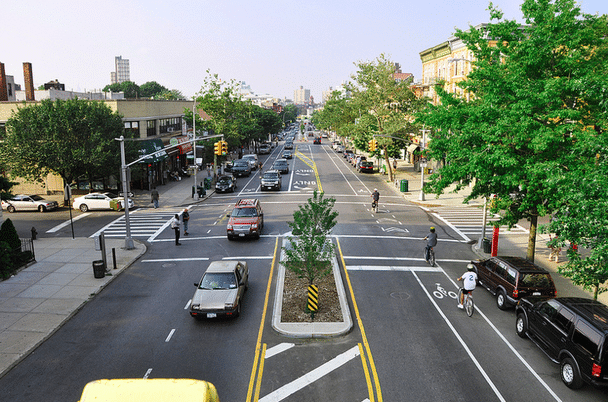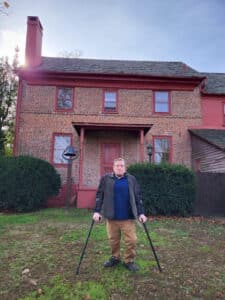As statewide advocates, we lead or participate in many discussions about Complete Streets, traffic calming, pedestrian and bicycle safety, and creating livable communities. From municipality to municipality, we’ve heard the same rhetoric from the uninformed who rarely have any data to back up these claims. Here are the three most common myths we hear about Complete Streets, and our debunking of these myths:
Myth #1: “That won’t work here. Our town is UNIQUE!”
Reality check: Just about everyone will tell you their town is unique. If they didn’t, they probably wouldn’t live there. But while we applaud individuals for feeling such strong civic pride, what is unique about towns has little to do with the streets and sidewalks and how people interact with them. A community’s uniqueness is related to its architectural and cultural assets, interesting destinations, creative and one-of-a-kind businesses, and the mix of cultures of the townspeople themselves. People drive, walk, shop, ride a bicycle, and spend money pretty much the same way wherever they go in the world, regardless of a town’s uniqueness. What is also common among most New Jersey towns is the high rate of pedestrian crashes; getting hit by a vehicle is not unique to any town, and neither are the preventative countermeasures that towns can take to eliminate them. For more information and the facts, see the Federal Highway Administration’s Proven Safety Countermeasures.
Myth #2: “Our businesses have lost sales!”
Reality check: These claims are rarely substantiated by data, and are often knee-jerk reactions by shop owners who believe that they are solely dependent upon customers who arrive by car. Contrary to losing sales, Complete Streets projects increase revenue, as people on foot or bicycling are much more likely to stop and patronize businesses. And while those who arrived by car will purchase more in a single trip because they are able to transport more items, people walking and pedaling make many more shopping trips per month than do those who drive to shopping areas, resulting in more dollars spent per month. The US is currently experiencing a change in what people are heading out the door to buy. Instead of material goods, consumers are looking for interesting restaurants, coffee shops and entertainment destinations, as shopping for “stuff” can be done much easier from the comfort of their living room couch. Towns across the nation are experiencing this shift, regardless of whether or not there are road infrastructure changes in the town. And those communities who are focusing on walkability and bikability will be better equipped to adjust to this shift in storefronts.
Myth #3: “Police, fire, and emergency services will not be able to get through!”
Reality check: Complete Streets projects reduce crashes. What is more desirable and better for a community: responding more quickly to a crash, or not having the crash occur in the first place? Secondly, many Complete Streets projects use painted lines to reconfigure the street network; emergency vehicles do, in fact, have the capability of driving over paint. In more built-out projects, mountable curbs and flush curbs are used for this reason. Projects that include a reduction in travel lanes make more space available for emergency vehicles, rather than less. Generally, having two lanes of traffic move to the side happens quicker than trying to get three or more lanes of traffic to move over. Buffer zones and bike lanes add more available space for emergency response.
Cyndi Steiner, Executive Director















































































